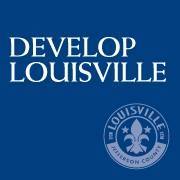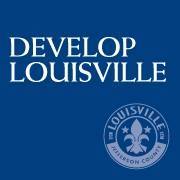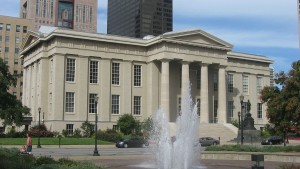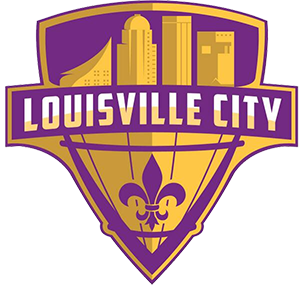 Louisville Metro Government (LMG) has been awarded a $450,000 grant by the U.S. Department of the Interior and the National Park Service to stabilize the former Quinn Chapel African Methodist Episcopal (AME) Church at 912 W. Chestnut Street. LMG’s Office of Redevelopment Strategies has added $150,000 to the stabilization effort bringing the stabilization investment to $600,000.
Louisville Metro Government (LMG) has been awarded a $450,000 grant by the U.S. Department of the Interior and the National Park Service to stabilize the former Quinn Chapel African Methodist Episcopal (AME) Church at 912 W. Chestnut Street. LMG’s Office of Redevelopment Strategies has added $150,000 to the stabilization effort bringing the stabilization investment to $600,000.
In 2002, the property was sold to the YMCA, which has a Chestnut Street location just west of the Church, and it has remained vacant. In 2010 and 2011, the YMCA invested $400,000 for stabilization that included a new roof for the Church and support beams as well as brick repair. The current Quinn Chapel AME Church congregation resides at 1901 W. Muhammad Ali Boulevard.
“In its many years, Quinn Chapel has played a vital role to the Russell neighborhood and in the fight for civil rights in our city. The fight for equity and improved quality of life for all Louisville residents is a fight that goes on today,” Jeana Dunlap, Director of the Office of Redevelopment Strategies said. “The city and YMCA value its importance and want to preserve its legacy for future generations to come.”
“With the new interest and investment in west Louisville, it is appropriate that Quinn Chapel stand and represent the rich heritage of the community and serve as a gateway into the area’s renewed future,” Steve Tarver, President & CEO of YMCA of Greater Louisville, said.
The Church was built in 1884 and originally housed the Chestnut Street Baptist Church until 1910 when it was purchased by the Quinn Chapel AME Church. Quinn Chapel takes its name from Bishop Paul Quinn, who was the fourth bishop of the AME Church and the first to visit Kentucky. The Church was a focal point for the civil rights movement in Louisville in the 1960s. Dr. Martin Luther King Jr. spoke at the Church in April 1961. It was the starting point of nightly marches for open housing in 1967 and the reason for Dr. King’s second visit to Louisville.
Quinn Chapel has retained its integrity in design, materials and craftsmanship. The eastern steeple has been removed but original stained glass windows and decorative masonry features are still intact. The building was added to the National Register of Historic Places in 1980. Essential repairs needed include installing a new roof for the rear portion of the building, stabilizing walls, repairing foundation, repointing mortar joints and repairing subflooring.
After stabilization, the city and YMCA will seek future redevelopment partners to bring back life to this historic structure. Quinn Chapel is a prominently featured structure on the southwest corner of 9th & Chestnut within eyeshot of the future mixed-use, mixed-income redevelopment of Beecher Terrace. Due to its proximity to 9th Street, the Church’s redevelopment will also benefit from the city’s Reimagine 9th Street plan, which will be complete in 2018.
 Louisville Metro Government is announcing the details of a new opportunity for residents to provide input on monuments in public spaces. Residents are encouraged to write a letter to any monument in Louisville Metro Public Art’s inventory through social media and use the hashtag #monumentalletters. A template and examples, as paraphrased from public comments submitted to date, can be found below:
Louisville Metro Government is announcing the details of a new opportunity for residents to provide input on monuments in public spaces. Residents are encouraged to write a letter to any monument in Louisville Metro Public Art’s inventory through social media and use the hashtag #monumentalletters. A template and examples, as paraphrased from public comments submitted to date, can be found below:
“Dear ________ (Monument),
I feel ________, because ___________________.”
Social media “letters” will assist Louisville Metro Government and the Public Art and Monuments Advisory Committee to understand the values that residents want artworks in public spaces to represent.
In addition, in the coming days, oversized letters from Louisville Metro Government to the public will be posted at the sites of the recently vandalized Castleman and Prentice monuments to update residents. The letter, specific to Castleman, reads:
“Dear Residents and Visitors: Public art, like any shared public space, reacts with time, conditions and individuals who engage with it. This monument represents John Breckinridge Castleman (1841–1918). It was privately commissioned and sited in public space in 1913. It was vandalized and subsequently conserved on multiple occasions, notably 1996 and 2017, and was most recently vandalized on February 7, 2018. A Public Art and Monuments Advisory Committee is hosting public meetings February–June 2018 for community input on principles that will guide decisions about public art and monuments. The current site conditions will not be addressed until after this process is complete. Louisville Metro Government remains committed to a public process with community input. We urge you to participate in public meetings. Write a letter. Get involved. Let your voice be heard. For more information please visit louisvilleky.gov/government/public-art.”
A similar “letter” will be placed by another recently vandalized monument, the monument of George Prentice at the main branch of the Louisville Free Public Library.
Residents may provide their letters on social media with the hashtag #monumentalletters, send them directly to Develop Louisville’s Facebook and Twitter accounts, or send letters through postal mail to Metro Development Center re: Monumental Letters, 444 S. 5th Street, Suite 600, Louisville, KY, 40202.
An additional Public Art and Monuments Advisory Committee meeting has been added to take place on April 12 at 6:00 p.m. at the University of Louisville, 111 Davidson Hall. Davidson Hall is located just south of Cardinal Boulevard & S. 3rd Street. Parking is available in the nearby Speed Museum garage.
Previously announced meetings include:
- April 14, 10:30 a.m. at the Cyril Allgeier Community Center
- May 18, 12 p.m. at the South Central Regional Library
- June 5, 6 p.m. at the Main branch of the Louisville Free Public Library (LFPL)
To date, two meetings have been held at the Main branch of the Louisville Free Public Library and the Kentucky Center for African American Heritage.
The Public Art and Monuments Advisory Committee is charged with developing a set of principles for evaluating Louisville’s existing public art and monuments. To view information pertaining to the Advisory Committee, please visit https://louisvilleky.gov/government/public-art/public-art-and-monuments-….
 Louisville Metro Government has again earned the Distinguished Budget Presentation Award from the Government Finance Officers Association of the United States and Canada (GFOA). This is the fifth consecutive year GFOA has granted the award – its highest recognition for government budgeting – to Metro.
Louisville Metro Government has again earned the Distinguished Budget Presentation Award from the Government Finance Officers Association of the United States and Canada (GFOA). This is the fifth consecutive year GFOA has granted the award – its highest recognition for government budgeting – to Metro.
GFOA guidelines and criteria are used to assess budgets for serving as a policy document, a financial plan, an operations guide, and a communications device. In receiving the award, Metro’s Fiscal Year 2017-2018 budget received high marks in all four categories.“Our city government is focused on providing a transparent, accessible government that responds to the needs of citizens. This award shows that our budget — the guiding document for our fiscal year — meets the high standards that citizens deserve. I’d like to congratulate Budget Director Aaron Jackson, our budget staff and the entire Office for Management & Budget for their tremendous work.”
Jackson added: “Mayor Fischer’s commitment to citizen engagement and transparency brings Metro in line with best practices, like those that GFOA works to promote. That drive to make Metro a leader in the government sector has been essential in receiving this honor for five years.”
The GFOA is a nonprofit professional association serving about 19,000 government officials and other finance practitioners in North America.
Louisville Metro’s FY17-18 budget presentation can be found here: https://louisvilleky.gov/sites/default/files/management_budget/fy18_appr…
 Louisville Metro has joined the nationwide “Smart911” service, which allows residents, businesses, and visitors to provide information to 9-1-1 dispatchers in advance of emergencies.
Louisville Metro has joined the nationwide “Smart911” service, which allows residents, businesses, and visitors to provide information to 9-1-1 dispatchers in advance of emergencies.
The free Smart911 service allows individuals and businesses to create online safety profiles with home, workplace, mobile phone numbers, along with additional information that would be valuable to 911 operators and first responders during an emergency. This information often includes home or work addresses, details about medical conditions, pets, and emergency contacts. Users are prompted to update their safety profiles every six months to ensure their information remains accurate.
Smart911 safety profiles are kept confidential and secure, and are only available to trained 911 operators in participating 9-1-1 centers across the country. This allows dispatchers to access profile information for traveling mobile phone users, and makes it easy for landline customers to update profiles with new numbers after moving.
Residents can sign up for LENSAlert and complete their Smart911 safety profile by visiting louisvilleky.gov and clicking on “Sign up for emergency alerts.” A simple way to sign up on your smartphone is to text “LENSAlert” to 67283 – this will automatically opt you in to emergency alerts and a link will be sent in a text message to complete your safety profile.

Photo: Louisville Metro Hall
Louisville Metro Government announced that it plans to hire a consultant through a competitive Request For Proposal process to review the city’s current and future facility needs, including the future use of LMPD headquarters, the Fiscal Court Building, and potential new construction through a public-private partnership on the parking lot south of Market Street between Sixth and Seventh streets.
The scope of the study will include the possibility of new construction, renovation, sale or facility purchase, as well as financing options.
The Metro Council approved $100,000 for the study in the 2017-18 fiscal year budget. Louisville Metro Government leaders will appear before the Council Budget Committee to update the committee and solicit feedback on development of the RFP.
The study will include:
- An evaluation of Metro Government’s current and future facility needs, including office space for countywide elected officials and including, but not limited to, the needs of the criminal justice system.
- Consideration of a potential public-private partnership to construct a new office or mixed-use building on the lot behind City Hall on Market Street between Sixth and Seventh Streets, including the current LMPD headquarters at Seventh and Jefferson streets.
- An assessment of the potential for new, modern LMPD headquarters;
- An assessment of the Fiscal Court building, located on Sixth Street behind Metro Hall.
- An evaluation of private market demands for new office or mixed-use construction and recommendations for potential financial structures for a public-private partnership
The RFP will be released no later than January 2018, with plans to select a consultant and receive preliminary findings by mid-year.
The administration is aware of the potential negative impact of pension reform on the city budget, but the need to plan for space needs is ongoing, as is seeking revenue enhancing measures such as public-private partnerships.
 Metro Councilmembers Bill Hollander (D-9) and Cheri Bryant Hamilton (D-5) applauded the bipartisan 20 to 3 vote approving a Louisville Metro Public Tree Ordinance. When the ordinance is signed by the Mayor, Louisville Metro will finally join other jurisdictions that have had a tree protection ordinance for years.
Metro Councilmembers Bill Hollander (D-9) and Cheri Bryant Hamilton (D-5) applauded the bipartisan 20 to 3 vote approving a Louisville Metro Public Tree Ordinance. When the ordinance is signed by the Mayor, Louisville Metro will finally join other jurisdictions that have had a tree protection ordinance for years.
Adoption of such an ordinance was the very first of 41 recommendations in the 2015 Louisville Urban Tree Canopy Assessment. It was also recommended by the Louisville Metro Tree Advisory Commission, after a lengthy review of ordinances in dozens of other cities, including several in Kentucky.
Councilmembers Hollander and Hamilton introduced the ordinance last December and had multiple meetings with citizens and other interested parties about it. The final version approved tonight reflected changes which Hollander and Hamilton said improved the proposal.
“Adoption of a Public Tree Ordinance has been recommended in Louisville for decades, most recently as part of the tree canopy and urban heat island studies,” Councilman Hollander said. “Since it was filed in December, we have met with many citizens and interested parties and had numerous public meetings. Many concerns and questions have been addressed. The ordinance will help focus attention on the loss of tree canopy in Louisville, protect the trees we have, and reduce the possibility of more losses. It recognizes that trees are important to quality of life and to our health”.
“Our community needs more trees, desperately. Studies have shown that it makes a difference and it will reduce the temperature in the City,” said Councilwoman Hamilton. “We need to do a better job of getting people to connect the dots between our environment and our health and this ordinance will help. The no-net-loss provision for trees in the right-of-way is a really important provision of the ordinance.”
The proposed ordinance covers “public trees”, which includes trees located on Metro Government owned or controlled land or in public rights-of-way controlled by Louisville Metro, except for parks and parkways under the jurisdiction of Louisville Metro Parks.
It consolidates Louisville’s tree efforts into the Metro Division of Community Forestry, to provide oversight and comprehensive coordination for tree and forestation issues. A new, broadly-representative Louisville Metro Tree Advisory Committee — appointed by the Mayor and approved by Metro Council — would make recommendations about those efforts.
The ordinance also establishes policies and standards for public trees, clarifying and replacing the provisions of several existing ordinances. For example, routine pruning of public trees is allowed without a permit, while the current ordinance requires a permit for any trimming.
Currently required tree removal permits for trees in the rights-of-way would be conditioned on replacement of the public tree, unless a waiver is granted. Trees removed by Louisville Metro are also required to be replaced. Those provisions effectively create a no-net-loss policy for public trees.
The ordinance also creates a Community Forestry Escrow Fund, to help defray the cost of mandated tree removal and planting of rights-of-way trees by abutting property owners with demonstrated financial need. The fund would receive appropriations from Metro Government and private contributions. Trees Louisville, a non-profit working on improving the tree canopy in Louisville, has agreed to contribute to the fund.
Hollander and Hamilton noted that the ordinance is just part of the effort to increase Louisville Metro’s tree canopy. Metro Council has also made changes in the Land Development Code which protect trees in proposed Conservation Subdivisions. Other changes in the Land Development Code are also under consideration and will be pursued through the Planning Commission, as state law requires.
 A milestone was reached today in the development of a soccer stadium district on about 35 underutilized acres in Butchertown. Financing was secured at a highly competitive rate for Louisville Metro Government’s sole investment in the project, $30 million. The general obligation bond anticipation notes (BANs) were sold to J.P. Morgan Securities LLC with a winning interest bid of 1.96 percent.
A milestone was reached today in the development of a soccer stadium district on about 35 underutilized acres in Butchertown. Financing was secured at a highly competitive rate for Louisville Metro Government’s sole investment in the project, $30 million. The general obligation bond anticipation notes (BANs) were sold to J.P. Morgan Securities LLC with a winning interest bid of 1.96 percent.
The city’s portion of the nearly $200 million soccer stadium district plan includes $25 million to buy and prepare the land, and $5 million to fund brownfield remediation and public infrastructure. Louisville City FC (LCFC) will develop the project, which will be anchored by a $50 million, 10,000-seat stadium. The development will also include retail, a hotel and offices, built by private investment.
In addition, LCFC will pay $14.5 million back to the city over 20 years for the land cost.
“This is a smart opportunity, and when smart opportunities to move our city forward come up, we’re going to take them. Pro soccer is an amenity that helps attract and retain young talent, and our entire city will benefit once this underutilized, highly visible space is reinvented as a bustling, vibrant soccer stadium district,” said Mayor Greg Fischer.
The project will create jobs and eliminate a brownfield currently filled with storage tanks, storage facilities and used cars. It also is expected to spark foot traffic to Butchertown, the Big Four Bridge, and Botanical Gardens. Additionally, it brings the prospect of a Major League Soccer franchise within reach.
A city-commissioned feasibility study confirmed that a soccer-specific stadium is needed to maintain and grow professional soccer in Louisville. The “stadium district,” to include the soccer stadium, Louisville Slugger Field and the Yum! Center, all within blocks of each other in the same line of sight, will build on the momentum downtown, in Nulu and Butchertown.
 Weather
Weather Traffic
Traffic @LouisvilleDispatch
@LouisvilleDispatch @LouisvilleDisp
@LouisvilleDisp Subscribe
Subscribe
